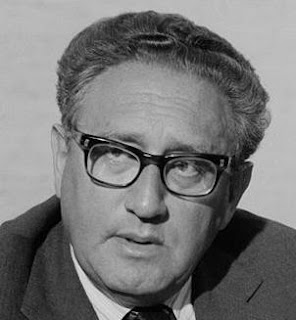
Prime minister Naoto Kan’s open reliance on integration with Washington as the central thrust of his domestic and foreign policy are a direct reversal from position espoused by his Japan Democratic Party’s landslide election victory last year.
Despite his early years as a 'grass-roots'reformer and one of the original instigators of the Democrats break form the long-ruling Liberal Democratic Party in 1998, signs that his role would evolve to one of blocking Japan’s assumption of sovereignty from Washington have long been evident.
His rival for DPJ leadership, Ichiro Ozawa, has espoused making Japan “a normal country,” and modernizing its neo-colonial relationship with the US. But that is not going to happen without an effort more substantive than casting votes.
Japan’s youth is also at a turning point, and clearly, pressure on young people to adapt to cold war, American Century-style rule, is generating wide insecurity. They know change must come. Just as the corporate world is facing a new era of overvalued yen and decreased trade with a less-stable global middle class, the domestic economy also begs for a new way.
With China growing on Japan’s borders and Washington accelerating government’s squandering of American wealth and stability on bailouts and weapons spending, the necessity of forming an Asian economic union has become recognized as an inevitable necessity to DPJ’s vast constituency.
Likewise, Japanese youth preferred Ozawa’s blunt approach to bringing in a new era, but to today’s (9/14/10) DPJ leadership vote, they were not invited. The seemingly unitary voice of Japan’s mass media vastly under-reported the significance of youth’s support for Ozawa and his promised evolution of the Japanese state. The so-called Asa-Nichi-Uri (Asahi/Mainichi/Yomiuri), or mass readership daily press, published highly questionable public opinion polls purporting that three quarters or more preferred Kan. The main reason given for this for this was public desire not to have a third prime minister in one year.
An telling example of the Japanese establishment clinging to its cold war ways was implicit in an address Kan gave at the UN during a visit to New York in 2003. He arrived slightly later than expected, and explained that he was late because he had just come from a meeting with Henry Kissinger.
Although Kissinger had been playing a quiet role in US foreign policy after leaving the shared administration of Richard Nixon/Gerald Ford in 1976, his role as a jet-setting ambassador to the world’s largest corporations, did much to perpetuate his position in world affairs.
Nixon’s impeachment and resignation in 1974 allowed a shift in US policy to take place under the tutelage of Ford’s Chief of Staff, Donald Rumsfeld, and Rumsfeld’s deputy, Dick Cheney. Among Nixon’s last futile attempts at a legacy for himself was pledging to eliminate nuclear weapons. This was not the strategy of the Rumsfeld, Cheney and the missile lobby.
Though Nixon carried water for Wall Street’s new and old money interests throughout his term of office, a shift was taking place from Nixon’s notably liberal government to a more warring style of American global leadership.
Vietnam may have been a lost cause, but it was eminently profitable for insiders. Moreover, with its opponents nearly running the beneficiaries out of town in its conclusion, US media began consolidating its message to ensure no similar popular backlash to public policy could ever again occur. Finance and manufacturing capital has continued to be poured into war technology ever since. And a more centrally planned domestic, demand economy has gained ground.
Kissinger straddled the era of enmity toward China and the Soviets, and the Rumsfeld-Cheney era of broad wealth consolidation through runaway defense spending amid détente and later, peacetime, that characterized the years after Nixon’s departure.
The neo-liberal Kissinger joined the Pentagon’s Defense Policy Board, and took part in discussions of military strategy and procurement that made neo-conservative jet setters in the business just as wealthy as he. As weapon’s spending grew, it’s excess profits spawned neoconservative think tanks that would capture the media and the increasingly bipartisan political culture along with it.
After the DJP was formed amid the US neoconservative renaissance, a staffer at the Japanese Embassy in Washington reported that visiting DPJ leaders would be regularly whisked away by arms lobbyists to visit their factories and show rooms. In the same period, a New York speech on ‘environment’ by Tokyo Governor Shintaro Ishihara, was turned into an hour of his promoting military aircraft sales, as if he had been subjected to the same fate and strapped into a F-35 simulator. The eminent politician and author, who was swept into office largely on the weight of his “The Japan that Can Say No” -- a treatise on Japan’s technological superiority and foreign weapons manufacturing -- was interrupted by his translator who asked him, “what does it mean, ‘dog fight?’”
A dog fight, slang for combat between enemy air force fighter jets, was not quite what Japan’s Democratic Party carried out. Instead, it was a straightforward, sanguine exercise in self-preservation by Ozawa followers who crossed the aisle to vote for Kan – most certainly in fear of voters disapproval for going against Asanichiuri, which, today, Japan confused with their own opinions.
No comments:
Post a Comment